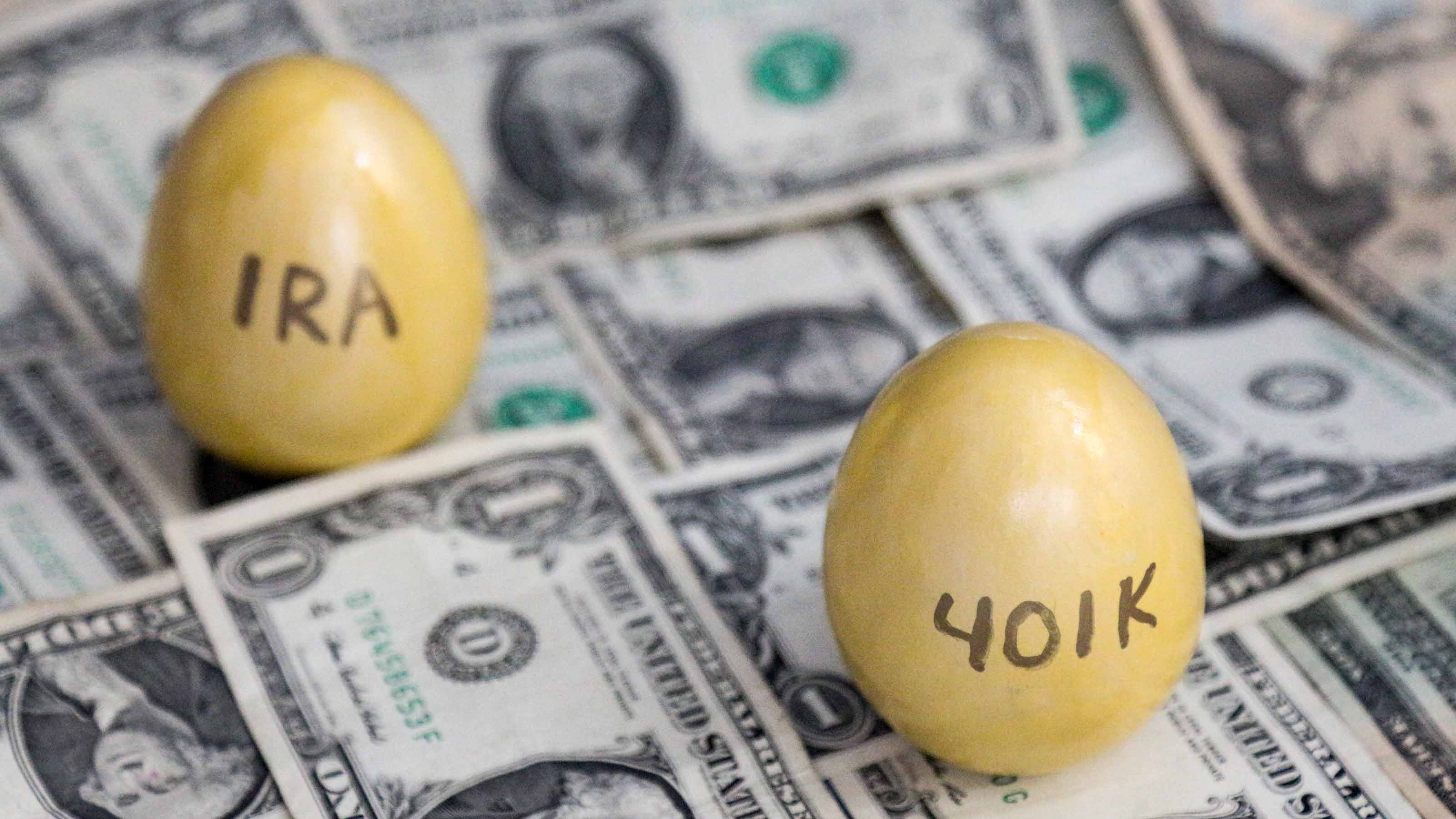Make the Most of the New Military Retirement Plan
The government is offering a new retirement option so that service members who leave the military before qualifying for a pension can still receive some benefits.

Question: I’m in the Navy, and I chose to enroll in the military’s new blended retirement system last year. How can I make the most of the new plan?
Answer: To get the most out of the new retirement system, make sure you contribute enough to the federal Thrift Savings Plan to qualify for a matching contribution—something the old system doesn’t offer—from the Department of Defense. You can also boost your retirement savings the longer you stay in the Navy.
Under the new blended retirement system, you—or anyone who joined the military in 2018 or later—will receive a smaller lifetime pension than you would under the old system. You’ll receive an annual pension of at least 40% of your base pay if you stay for 20 years, or 60% if you stay for 30 years. But you’ll also receive extra money in your Thrift Savings Plan, the tax-advantaged retirement-savings plan for members of the military and federal employees. Any member of the military can contribute to the TSP, but people who are covered by the blended retirement system will receive a matching contribution from the Department of Defense. The department will automatically contribute 1% of your base pay to the TSP after 60 days of service, and it will match your TSP contributions for the next 4% of your pay, which can continue for up to 26 years of service. You can keep the entire balance in the TSP—including the government contributions—as long as you remain in the military for at least two years.

Sign up for Kiplinger’s Free E-Newsletters
Profit and prosper with the best of expert advice on investing, taxes, retirement, personal finance and more - straight to your e-mail.
Profit and prosper with the best of expert advice - straight to your e-mail.
Because the TSP benefits are matching contributions, people in the blended retirement system need to take some extra steps to receive the maximum—specifically, you have to contribute 5% of your pay each year to the TSP to receive a full match from the Defense Department. Try to contribute at least enough money to receive the full match each year. After all, that’s free money that can help you boost your savings. And if possible, it’s a good idea to invest even more in this tax-advantaged retirement-savings plan.The government offered a new retirement plan after finding that fewer than 20% of service members stayed long enough in the military to qualify for a pension. Under the traditional retirement system, service members receive a lifetime income of at least 50% of their base pay if they remain in the military for at least 20 years, and up to 75% pay for 30 years of service. But if they leave before 20 years, they don’t receive any retirement pay. People who joined the military before 2006 or didn’t opt in to the blended retirement system are still covered under the traditional plan.
People who chose to remain in the traditional retirement system don’t receive matching TSP contributions from the Defense Department. But they can still benefit from contributing to this low-cost, tax-advantaged retirement plan and can keep all of the money that is growing tax-deferred in the TSP, no matter when they leave the military. (You’ll have to pay a 10% early-withdrawal penalty if you withdraw money from the TSP before age 59 ½, unless you leave your job after age 55.)
Service members—whether in the new or old system—can contribute up to $19,000 to the TSP in 2019 (up to $25,000 if age 50 or older). And if they’re deployed and receiving tax-exempt pay while serving in a combat zone, they can contribute up to $56,000 to the TSP for the year. Deployed service members can also invest up to $10,000 in the military’s Savings Deposit Program; they’ll receive 10% annual interest while deployed and for up to three months after their return.
For more information about the Thrift Savings Plan, the military’s Savings Deposit Program for deployed service members, and other special saving and investing opportunities for members of the military, see the newest edition of our Financial Field Manual. I just updated the manual to include strategies for making the most of the new retirement system and how to make the most of other financial benefits, such as low-cost life insurance, education benefits, mortgages requiring no down payment, special legal protections and income-tax benefits. You’ll also learn about strategies to protect yourself from scams targeting military families, how to plan financially for deployment and ways to prepare your finances for the transition to civilian life.
SPECIAL REPORT: Personal Finance for Military Families
Get Kiplinger Today newsletter — free
Profit and prosper with the best of Kiplinger's advice on investing, taxes, retirement, personal finance and much more. Delivered daily. Enter your email in the box and click Sign Me Up.

As the "Ask Kim" columnist for Kiplinger's Personal Finance, Lankford receives hundreds of personal finance questions from readers every month. She is the author of Rescue Your Financial Life (McGraw-Hill, 2003), The Insurance Maze: How You Can Save Money on Insurance -- and Still Get the Coverage You Need (Kaplan, 2006), Kiplinger's Ask Kim for Money Smart Solutions (Kaplan, 2007) and The Kiplinger/BBB Personal Finance Guide for Military Families. She is frequently featured as a financial expert on television and radio, including NBC's Today Show, CNN, CNBC and National Public Radio.
-
 Self-Directed Brokerage Accounts: Retirement's Hidden Gem?
Self-Directed Brokerage Accounts: Retirement's Hidden Gem?SDBAs are underused and have a reputation for being risky, but when managed carefully they can help you grow your wealth faster than your company's 401(k).
By Scott M. Dougan, RFC, Investment Adviser
-
 Early-Stage Startup Deals: How Does a SAFE Work?
Early-Stage Startup Deals: How Does a SAFE Work?Investing in an early-stage startup can get complicated fast, so the venture capital industry turns to other investing options. One is a SAFE.
By Murat Abdrakhmanov
-
 Catch-Up Contributions to Retirement Accounts Boosted By SECURE Act 2.0
Catch-Up Contributions to Retirement Accounts Boosted By SECURE Act 2.0Americans approaching retirement age can now squirrel away more money in IRAs, 401(k)s, and other retirement accounts.
By Rocky Mengle
-
 When RMDs Loom Large, QCDs Offer a Gratifying Tax Break
When RMDs Loom Large, QCDs Offer a Gratifying Tax BreakSend money directly to charity from your traditional IRA, and you won’t owe taxes on the amount you donate. It’s a win-win!
By Scott Tucker, Investment Adviser Representative
-
 Save More for Retirement in 2023 Thanks to Higher IRA and 401(k) Contribution Limits
Save More for Retirement in 2023 Thanks to Higher IRA and 401(k) Contribution LimitsIf you're saving for retirement, you can contribute a lot more to an IRA, 401(k), or other retirement account in 2023.
By Rocky Mengle
-
 Traditional IRA Contribution Limits for 2022
Traditional IRA Contribution Limits for 2022traditional IRA Once again, retirement savers won’t be able to contribute more to traditional IRAs this year, but changes to how they work may be coming.
By Jackie Stewart
-
 Trading Options for Your 401(k)
Trading Options for Your 401(k)Employee Benefits About 40% of companies offer self-directed brokerage accounts in their 401(k) plans, giving participants more investing options.
By Sandra Block
-
 8 Thrift Savings Plan Mistakes: What Not to Do With Your TSP
8 Thrift Savings Plan Mistakes: What Not to Do With Your TSPretirement planning Many federal workers saving for retirement in TSPs get tripped up by these common pitfalls. To help maximize your own savings, make sure you steer clear of these eight mistakes.
By Scott Tucker, Investment Adviser Representative
-
 Thrift Savings Plan Contribution Limits for 2021
Thrift Savings Plan Contribution Limits for 2021Financial Planning Federal workers and military personnel can save the same amount in their TSP retirement accounts this year as 2020.
By Jackie Stewart
-
 How Much Can You Contribute to the Thrift Savings Plan for 2020?
How Much Can You Contribute to the Thrift Savings Plan for 2020?retirement Federal workers and military personnel can save more in their TSP retirement accounts in 2020.
By Rivan V. Stinson